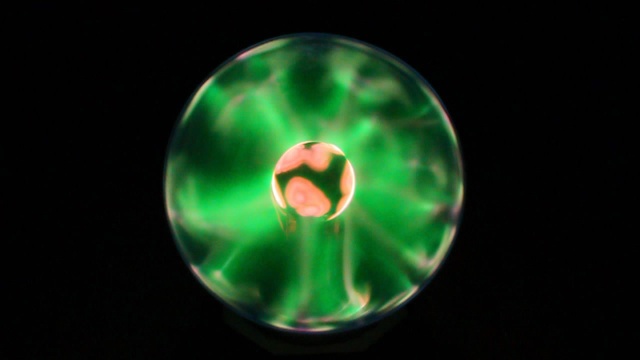Pressure and Gas
The inside of a plasma globe’s glass sphere is a
fairly strong vacuum. What little gas there is must have
very specific properties for the globe’s effect to work,
so there are only a few different types of gases that
plasma globes commonly have.
First of all, the inner Tesla coil is sometimes
encased in a tiny glass ball (not to be confused with the
larger outer glass ball), sometimes it isn’t; either way,
the gas in the globe may make contact with it. As a
result, it is important that this gas be nonreactive so it
doesn’t react with the surface of the Tesla coil. This is
part of why Noble Gases like Neon, Xenon, and Krypton are
commonly used.
Another important property of the gases is the
color of light they emit when changing energy states.
Different gases emit different colors when being “broken
down” by electrons, so the color of the plasma in a plasma
globe is entirely dependent on what gases are inside it.
The pressure of the gas inside the globe is also
extremely important! It can’t be too high or too low,
otherwise the plasma globe won’t work as intended. The
lower the pressure is, the easier it is for the electrons
that shoot off the electrode to break down the gas
particles into ions. Thus, if the pressure is too high,
the electrons won’t be able to create any ions (and by
extension, any plasma) and you won’t see anything.
However, this doesn’t mean the pressure should be lowered
as far as possible. The amount of gas particles in the
globe affects the ability of the “streamers” you see to
stay intact. A low pressure means fewer particles and a
longer distance for the electrons to travel to hit them.
As a result, if the pressure is too low you will simply
see a glowing globe without any mini “streamers,” similar
to a light bulb except nowhere near as bright.
